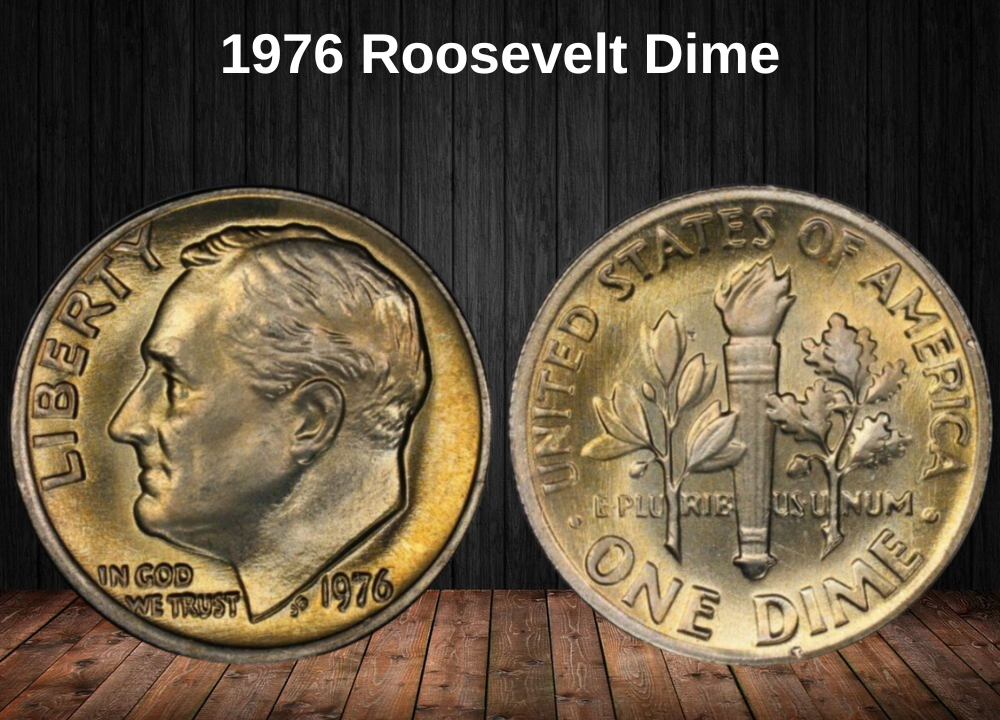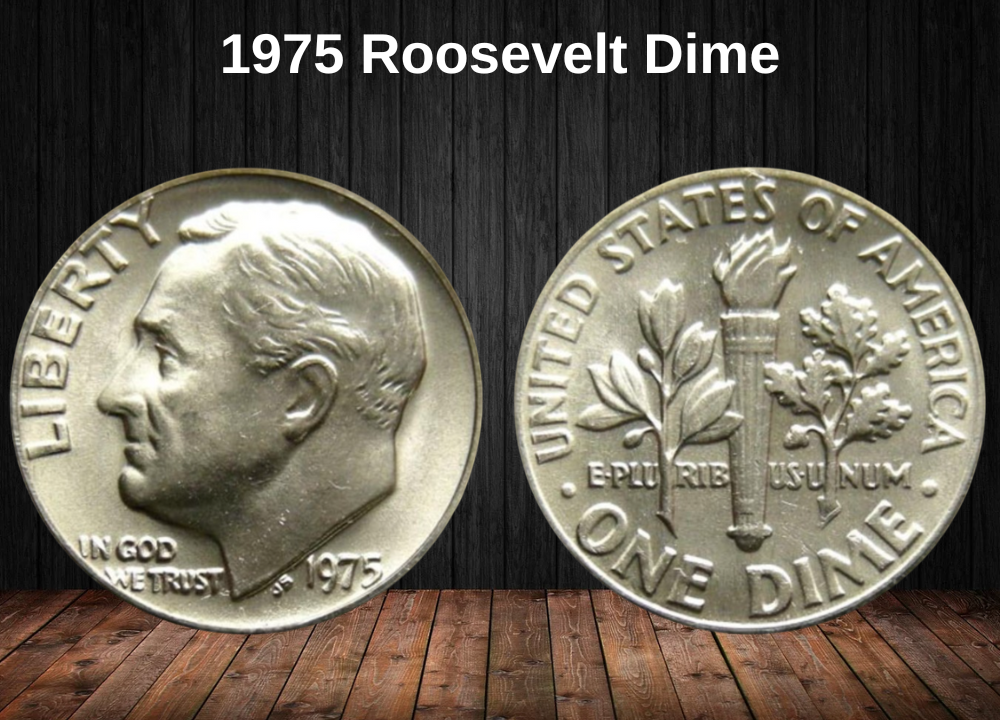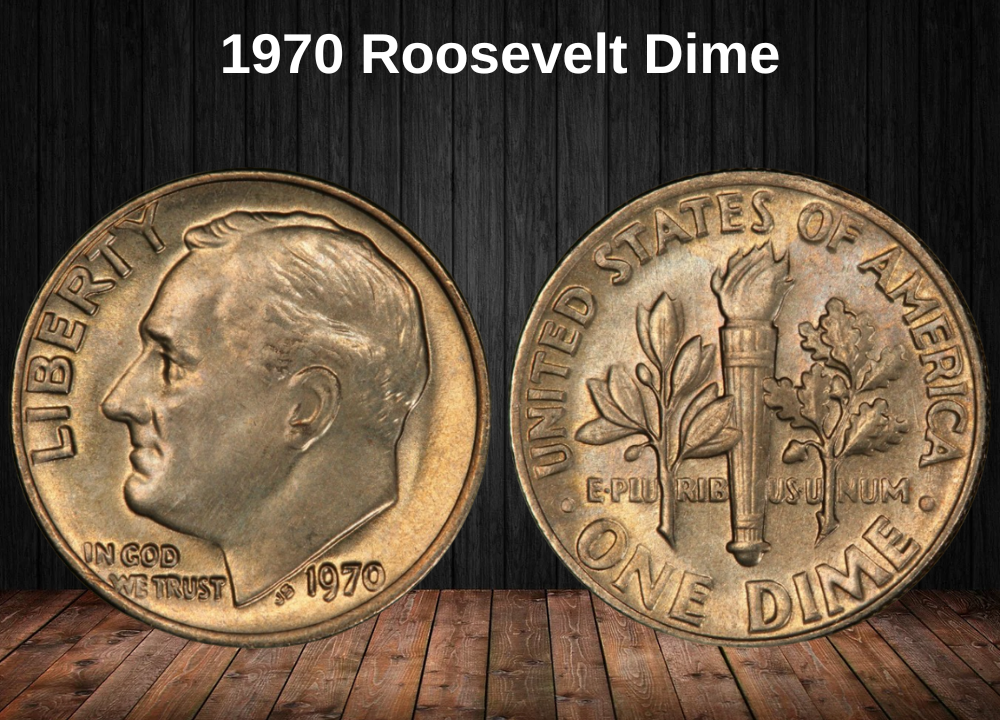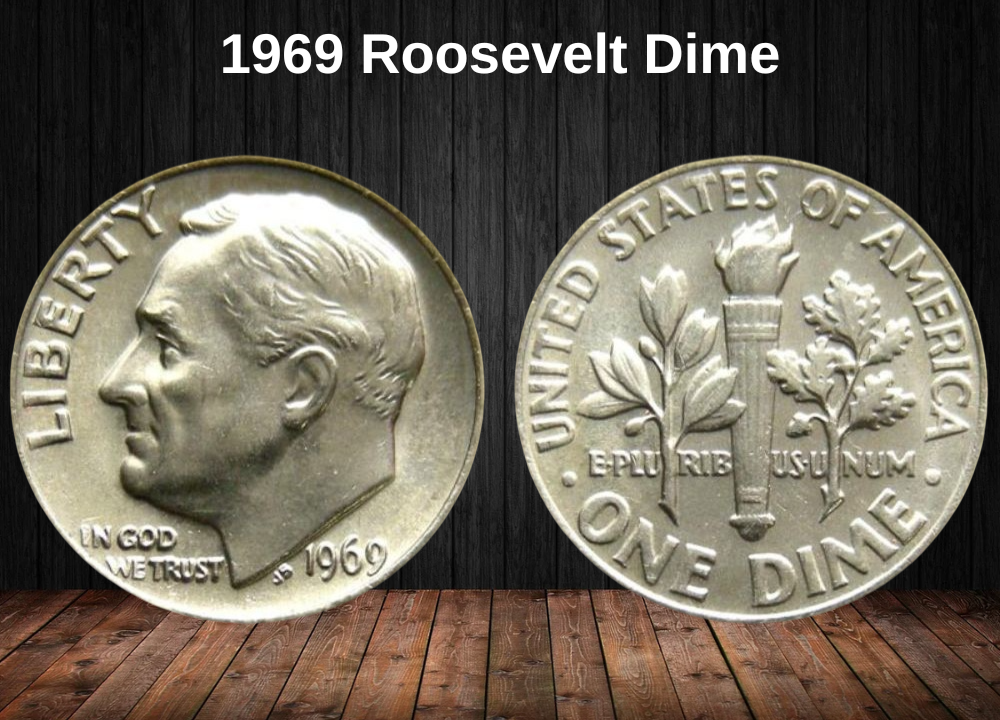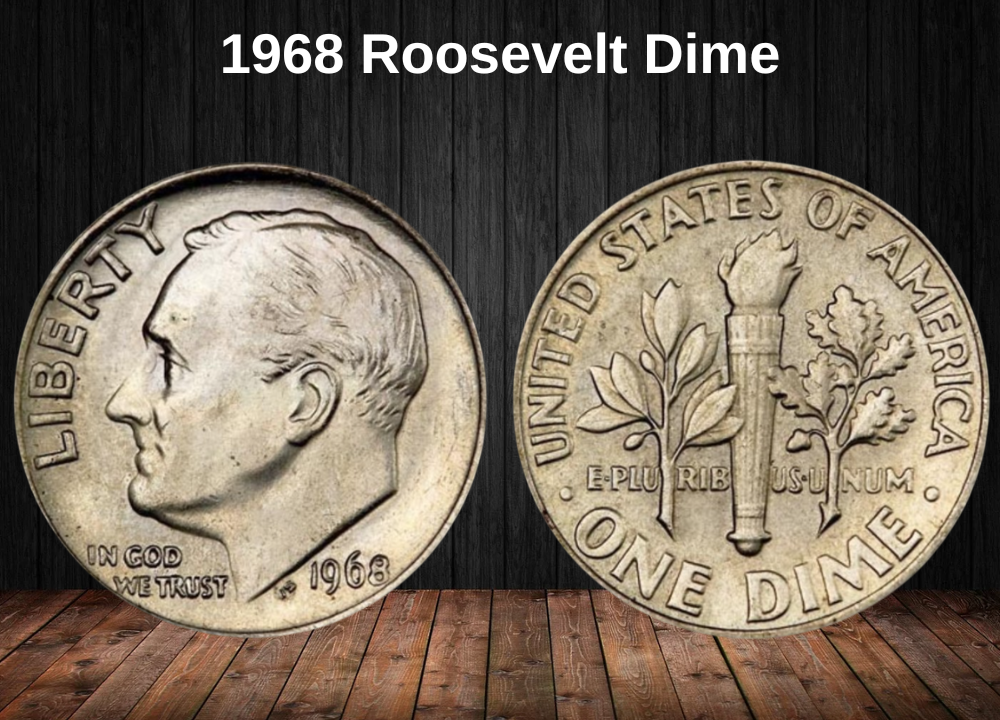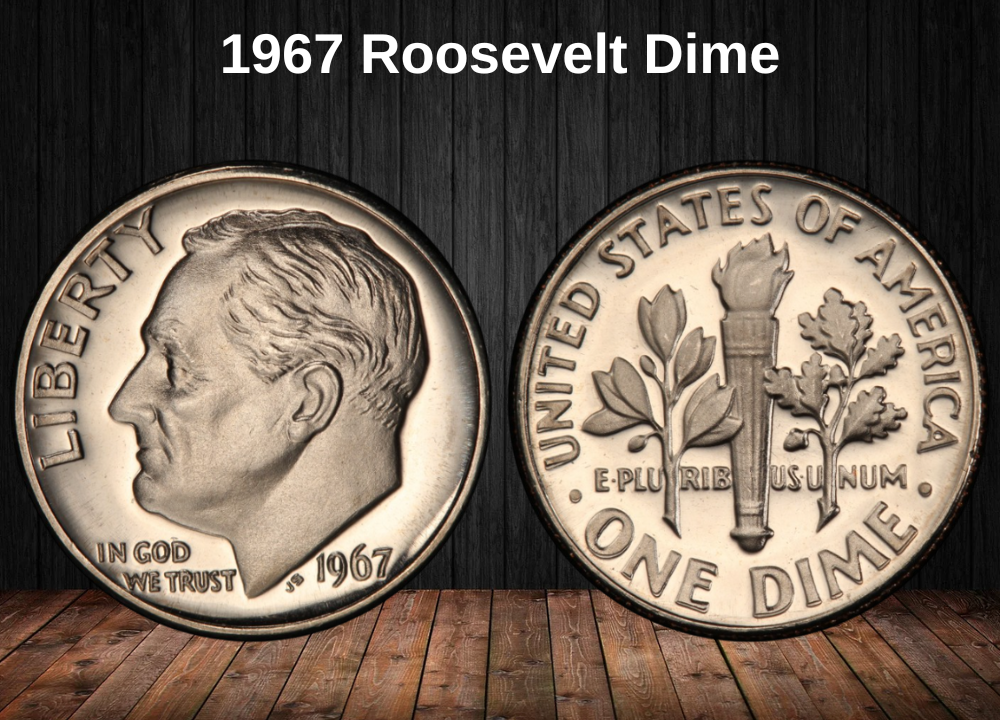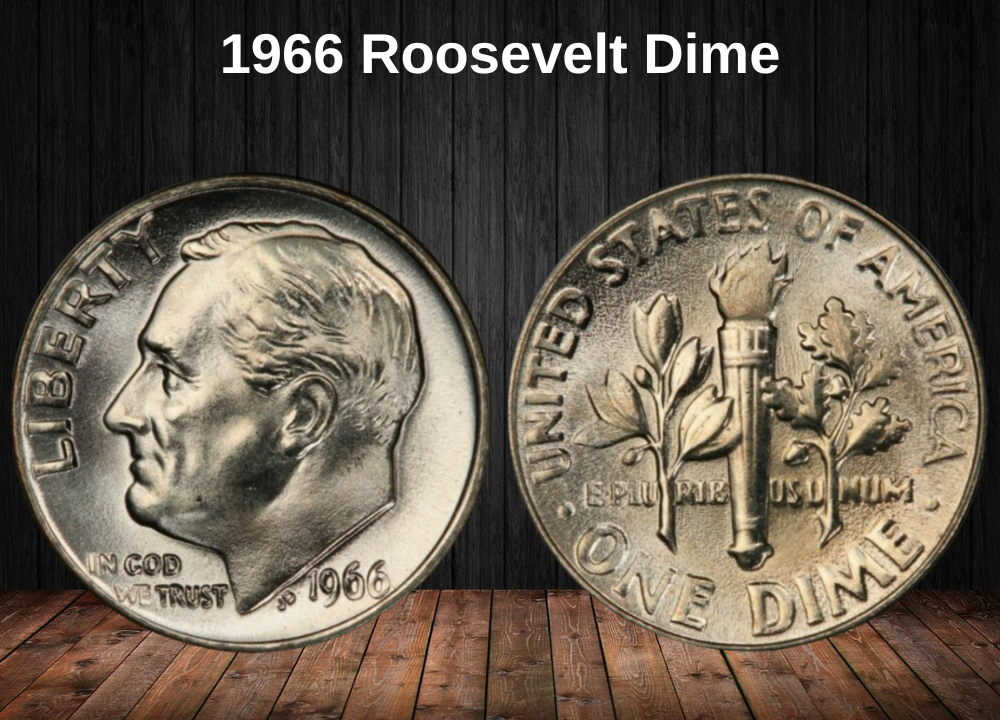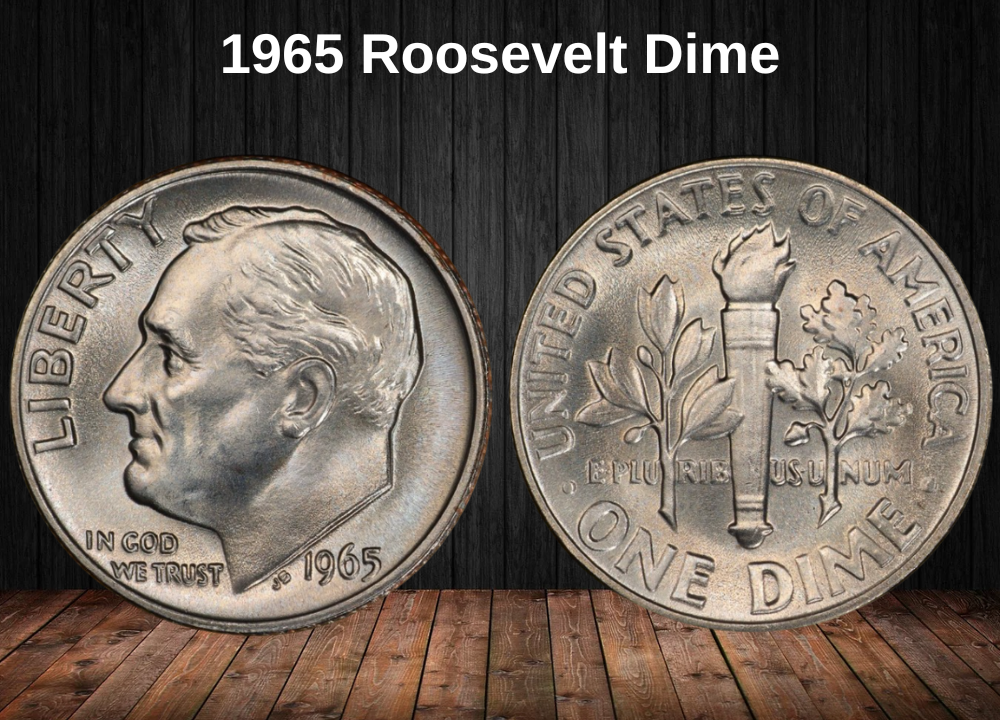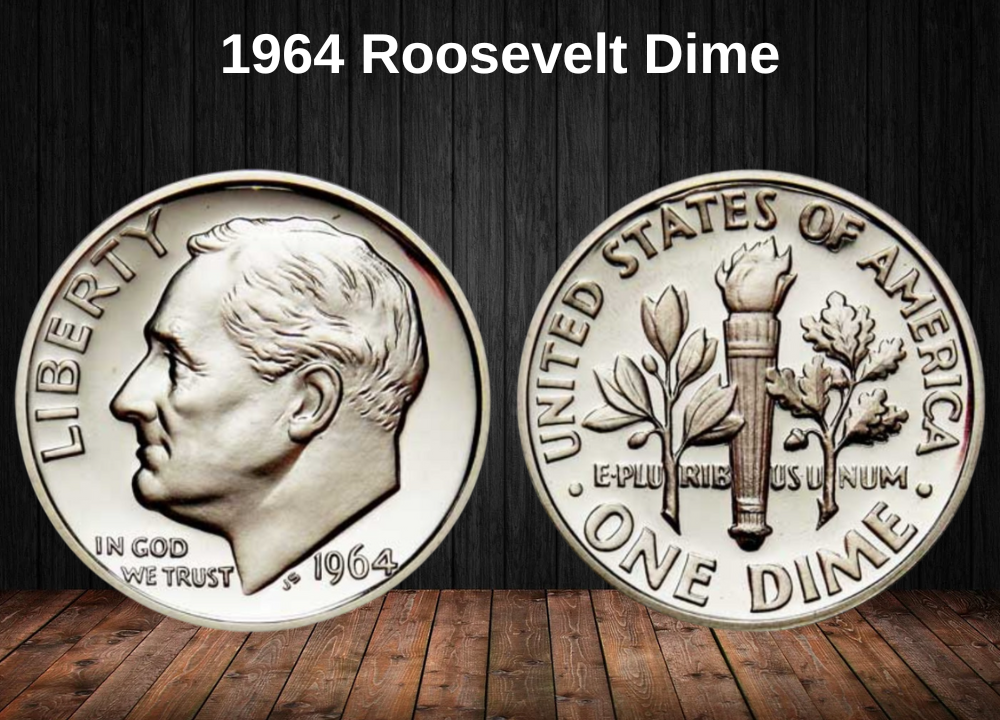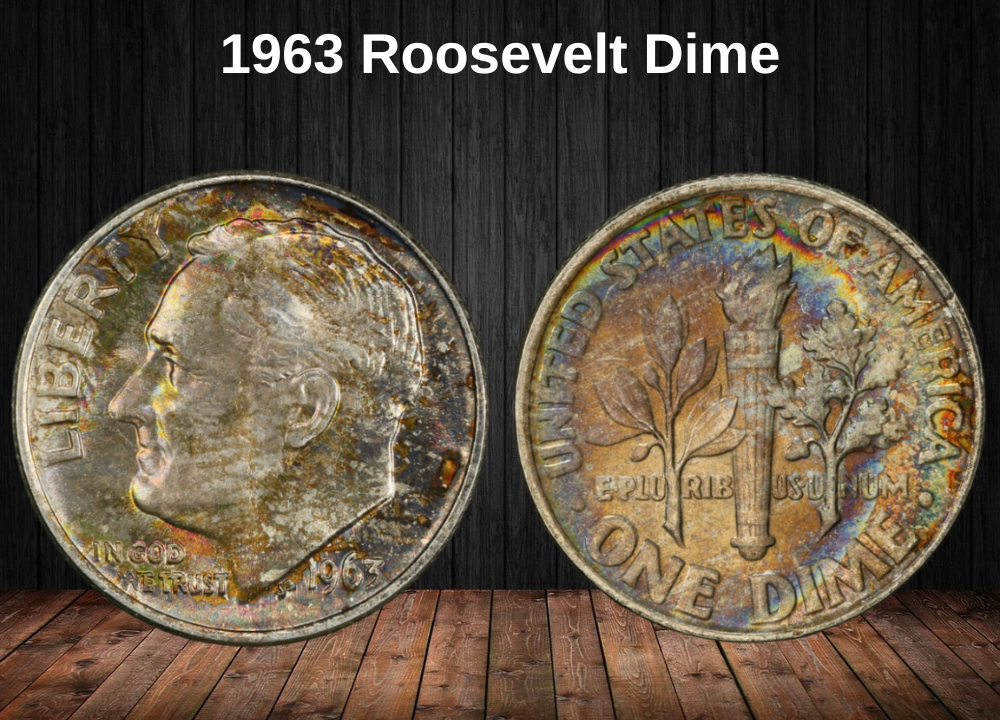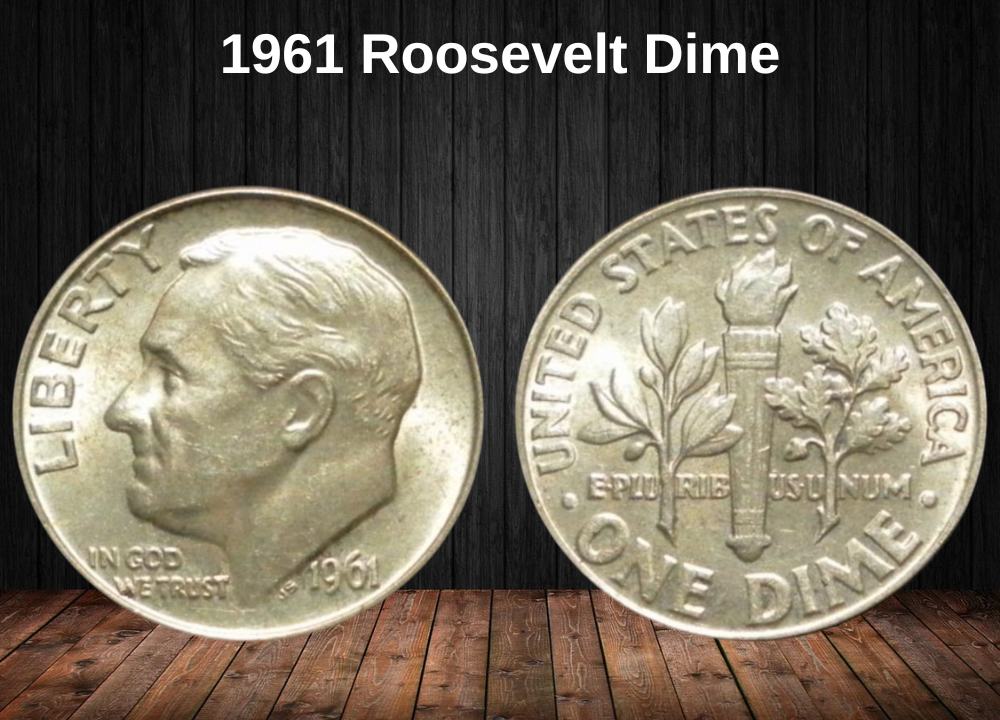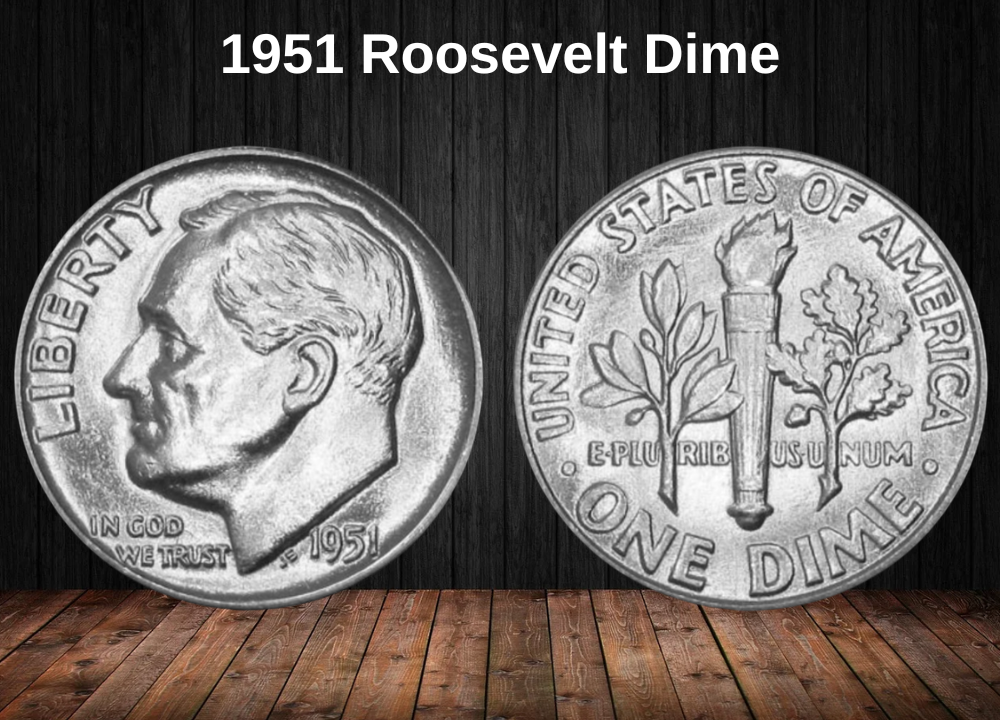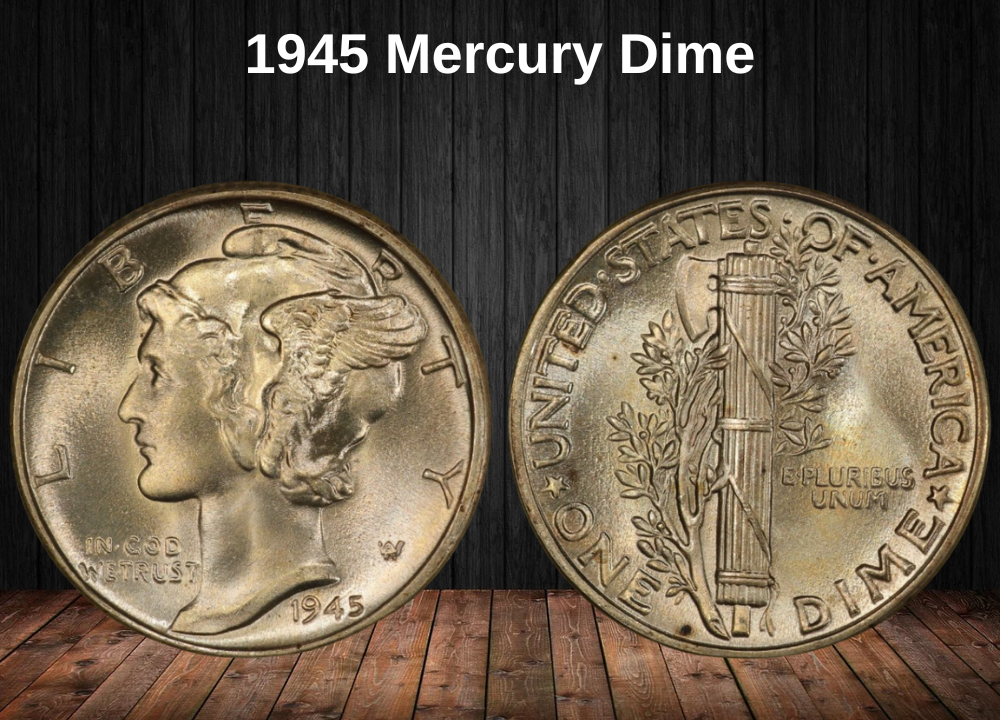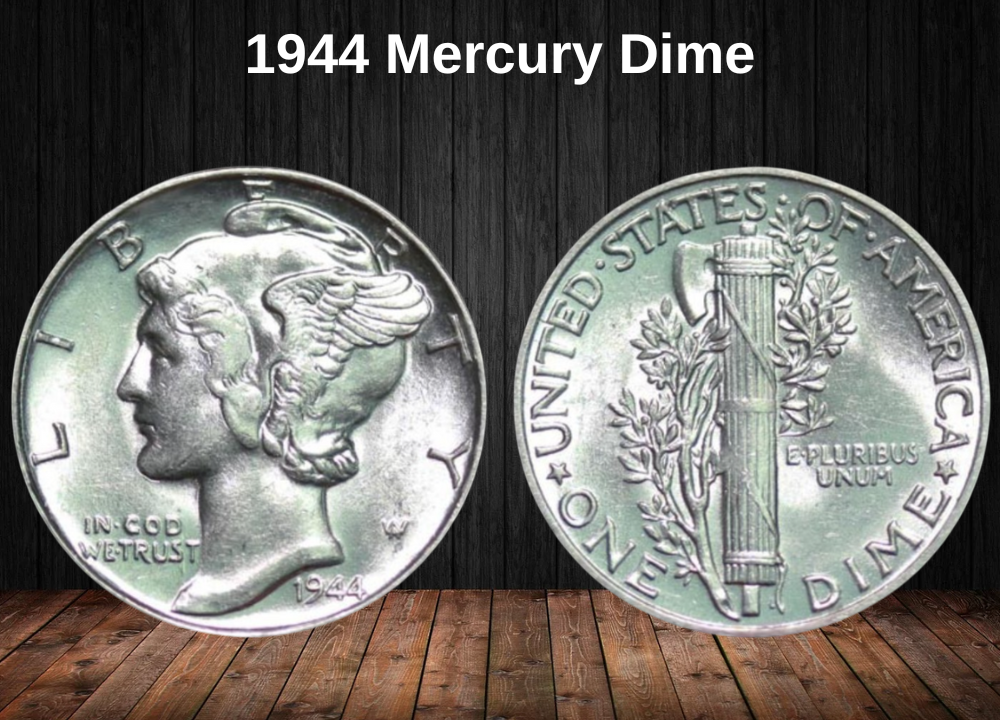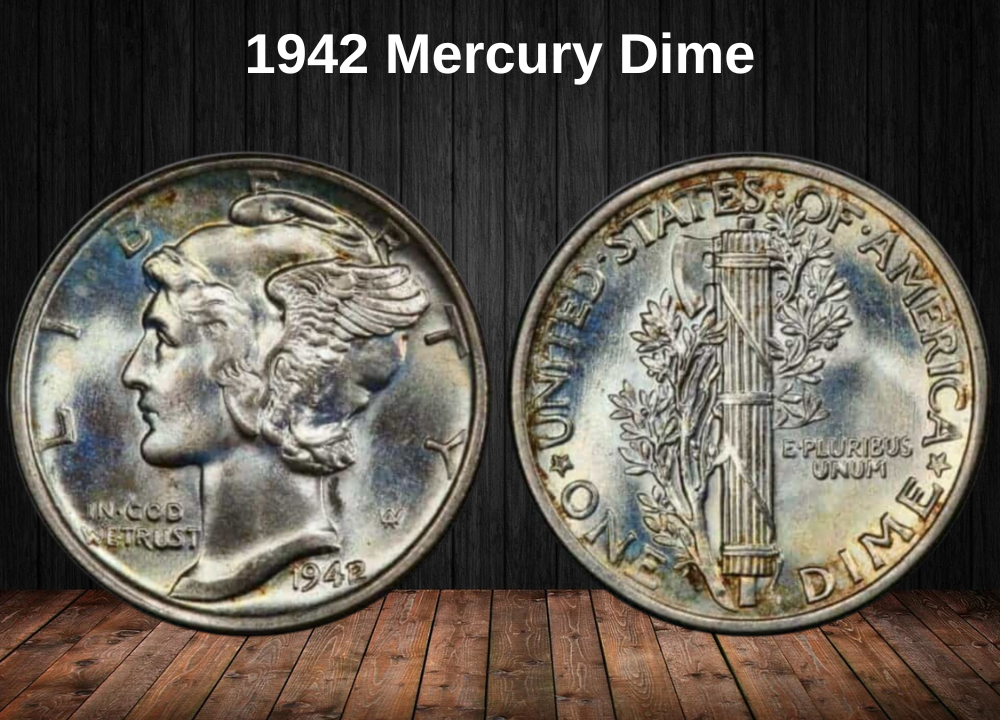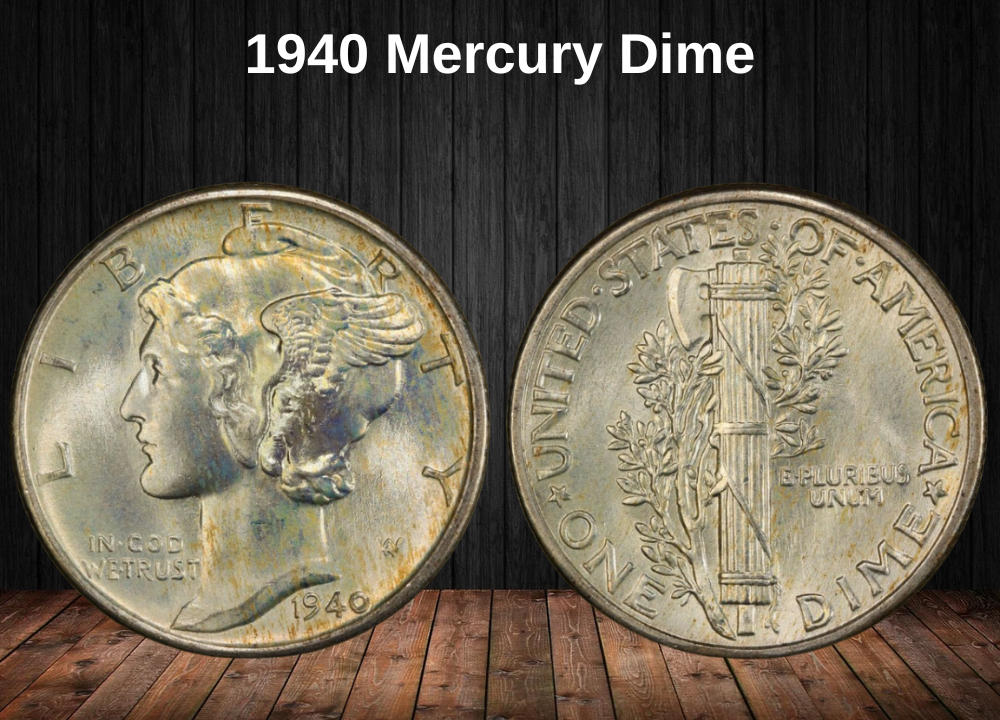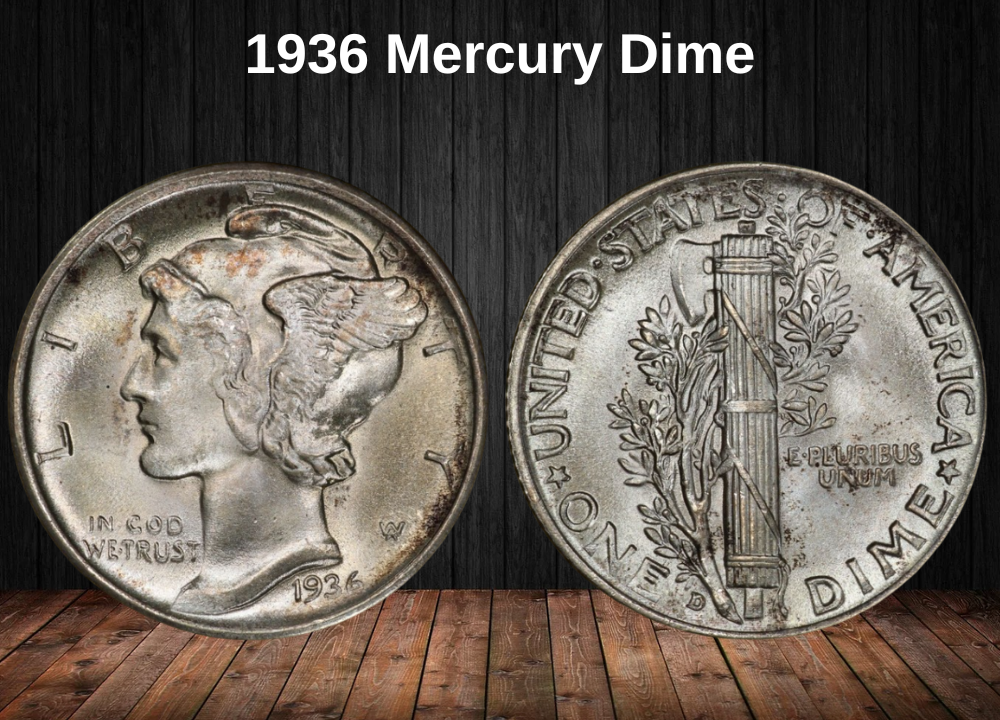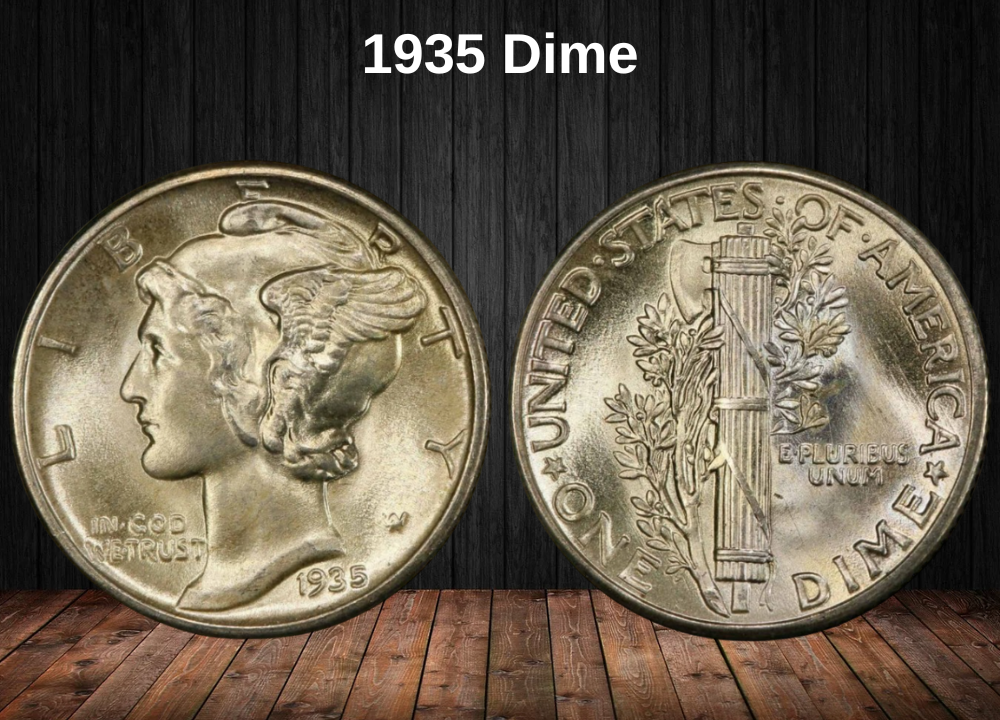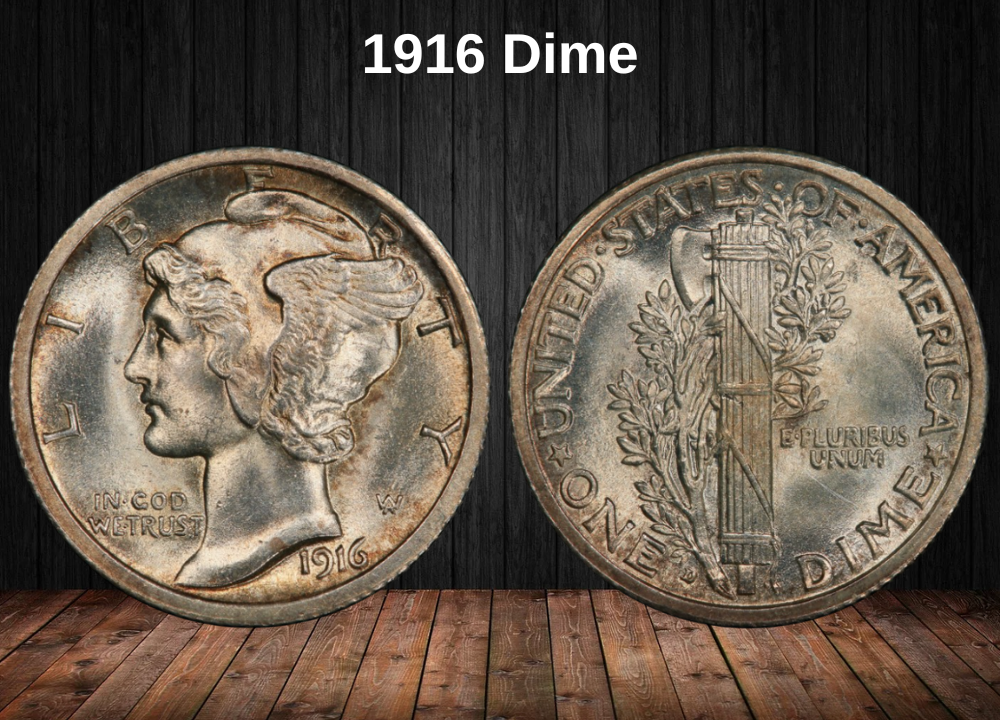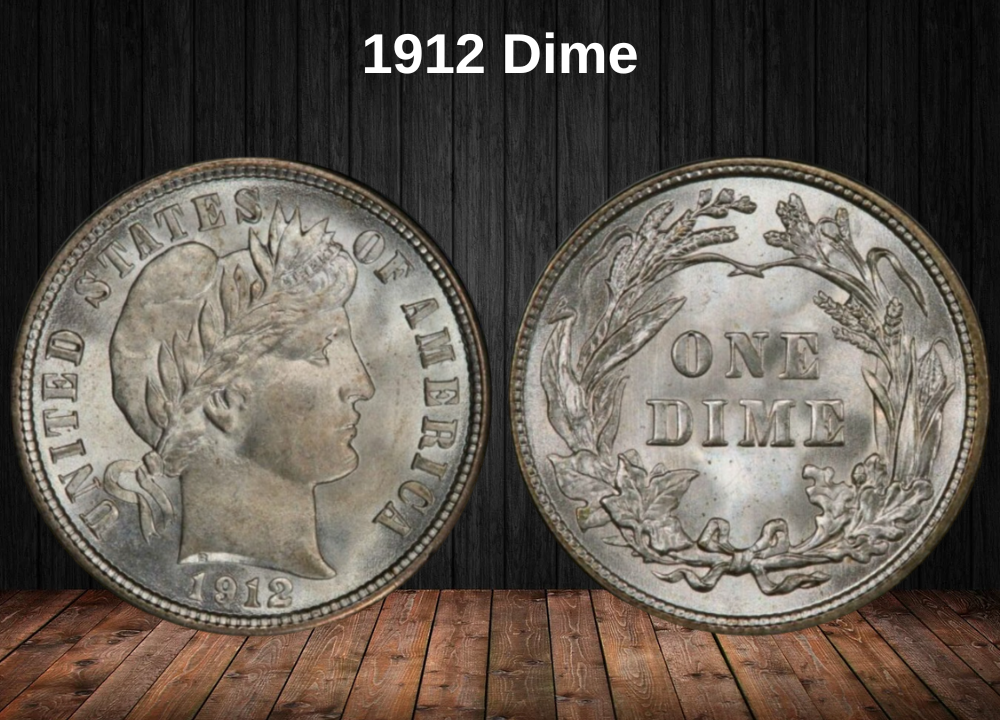The 1925 Mercury Dime is one of the most sought-after coins in American numismatics. While it may look like just a small ten-cent piece at first glance, its artistic design, high silver content, and scarcity in certain conditions make it worth far more than face value today.
This dime belongs to the famous Mercury Dime series (1916–1945), designed by sculptor Adolph A. Weinman. On the obverse, Lady Liberty is shown wearing a winged Phrygian cap—a symbol of freedom of thought. The reverse depicts a Roman fasces tied together with an olive branch, representing authority, strength, and peace.
The 1925 issue is especially interesting because many of the coins from this year are known for weak strikes, where details appear flat or under-defined. As a result, sharply struck examples—especially those graded with the Full Bands designation (where the horizontal bands on the fasces are completely visible)—can command very high premiums at auction.
1925 Dime Value Chart
| Mint Mark | Extremely Fine | AU58 About Uncirculated | MS62 Uncirculated | MS65 Gem Uncirculated | MS67 Superb Gem Uncirculated |
|---|---|---|---|---|---|
| 1925 No Mint Mark (Philadelphia) | $12 | $50 (Full Bands: $65) | $80 (Full Bands: $165) | $400 (Full Bands: $1,000) | $1,750 (Full Bands: $3,600) |
| 1925 “D” (Denver) | $150 | $450 (Full Bands: –) | $750 (Full Bands: $850) | $2,000 (Full Bands: $5,250) | (Full Bands: $22,500) |
| 1925 “S” (San Francisco) | $100 | $360 | $625 (Full Bands: $1,000) | $1,500 (Full Bands: $4,250) | (Full Bands: $67,500) |
History of the 1925 Dime
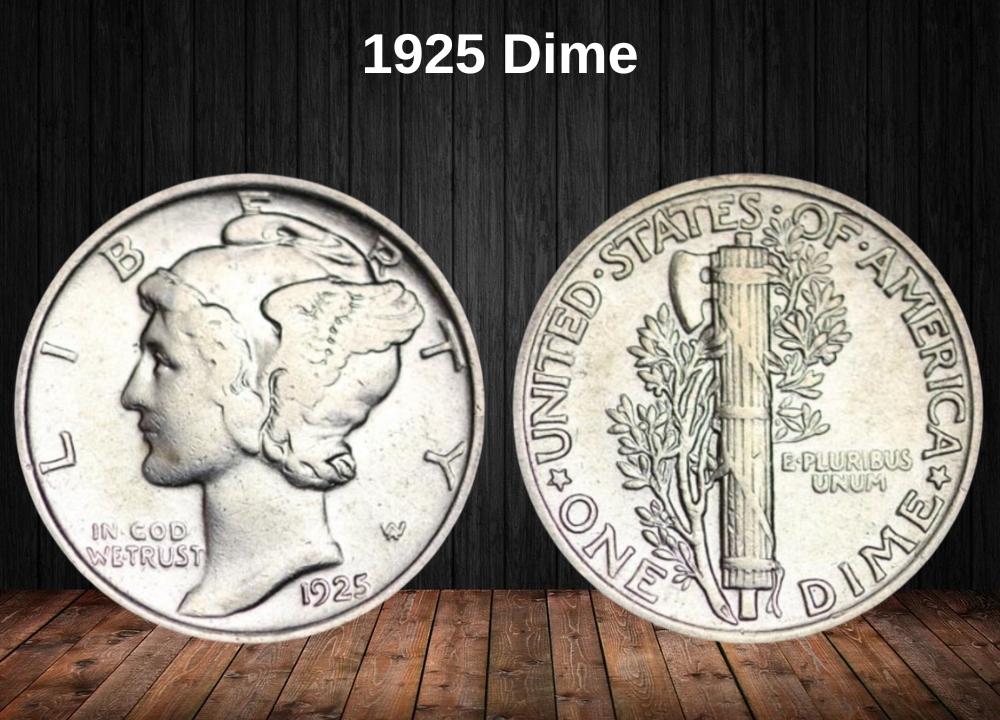
The 1925 Mercury Dime, officially called the Winged Liberty Head Dime, was struck during a period of post–World War I recovery in the United States. Designed by Adolph A. Weinman, the series had only been in production for less than a decade by this time, but it was already celebrated for its beauty and symbolic imagery.
Unlike some earlier years, the 1925 issue was notorious for having weak strikes, especially from the Philadelphia Mint. Many coins lacked sharp details on Liberty’s hair and the fasces on the reverse, making well-struck and Full Bands examples particularly rare today.
The Denver and San Francisco mints also contributed smaller mintages that year, adding to the series’ complexity. Today, the 1925 dime is a significant piece of American numismatic history—valued both for its artistry and its scarcity in high grades.
Features of the 1925 Dime
The 1925 Mercury Dime, officially called the Winged Liberty Head Dime, was designed by Adolph A. Weinman, one of the leading sculptors of early 20th-century U.S. coinage. First issued in 1916 to replace the Barber Dime, this series ran until 1945 and is today recognized as one of the most beautiful silver coins ever struck by the United States Mint.
Obverse of the 1925 Dime
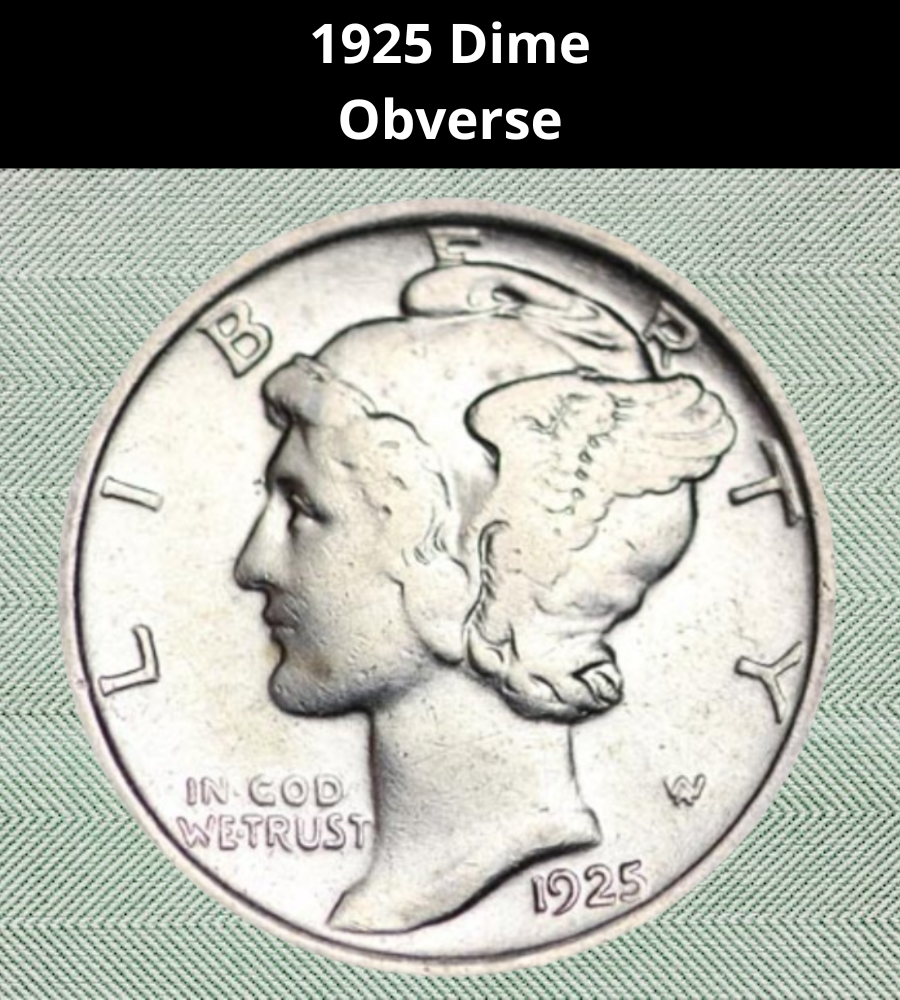
The obverse portrays Lady Liberty facing left, adorned with a winged Phrygian cap that symbolizes freedom of thought. Because of the resemblance to the Roman god Mercury, collectors quickly gave the coin its popular nickname—the “Mercury Dime.”
The inscriptions on the obverse include:
- LIBERTY across the upper rim
- IN GOD WE TRUST to the left of Liberty’s neck
- The date 1925 at the lower right
- Designer’s initials “AW” near Liberty’s neck
Reverse of the 1925 Dime

The reverse features a fasces, or a bundle of rods tied with leather straps, symbolizing unity and strength, combined with an olive branch, a timeless emblem of peace. This design carried great symbolic weight in the years following World War I, representing America’s balance of resilience and harmony.
The inscriptions on the reverse include:
- UNITED STATES OF AMERICA along the upper rim
- E PLURIBUS UNUM to the right of the fasces
- ONE DIME at the bottom
- The mint mark (D for Denver, S for San Francisco, or blank for Philadelphia) positioned to the right of the “E” in “ONE”
1925 Dime Specifications
- Face Value: $0.10 (ten cents)
- Shape: Round
- Composition: 90% silver, 10% copper
- Type: Standard circulation coin
- Diameter: 17.91 mm (0.705 in)
- Weight: 2.50 g (0.08038 troy oz)
- Silver Weight: 2.25 g (0.07234 troy oz)
- Minting Technique: Milled
- Thickness: 1.35 mm (0.053 in)
- Edge: Reeded
The 1925 Mercury Dime is notable for often having weaker strikes, especially from the Philadelphia Mint, making sharp details and Full Bands examples rare. These well-preserved coins, with their artistic design and high silver content, remain highly desirable among collectors.
1925 Dime Grading
Grading Scale for the 1925 Mercury Dime
| Grade # | Grade Description | Notes on Condition |
|---|---|---|
| 1 | Basal State-1 | Barely identifiable, heavily worn |
| 2 | Fair | Very poor detail, nearly smooth |
| 3 | Very Fair | Outlines visible, but heavy wear |
| 4–6 | Good | Major details outlined, rims flat |
| 7–10 | Very Good | Design clear, moderate wear |
| 12–15 | Fine | Moderate detail with wear on high points |
| 20–30 | Very Fine | Stronger detail, light even wear |
| 40 | Extremely Fine | Clear detail, only slight flattening |
| 50 | About Uncirculated | Minimal wear, nearly mint condition |
| 60 | Mint State | No wear, full luster, some marks |
| 65 | Mint State Gem | Sharp strike, excellent luster, very few marks |
| 70 | Perfect Mint State | Flawless coin, full strike, perfect surfaces |
Grading your coin accurately is the necessary first step in identifying its exact value. Even a small difference in grade—like AU (About Uncirculated) versus MS (Mint State)—can mean hundreds or even thousands of dollars in value.
1925 Dime Value Guides
1925 No Mint Mark Dime Value (Philadelphia)
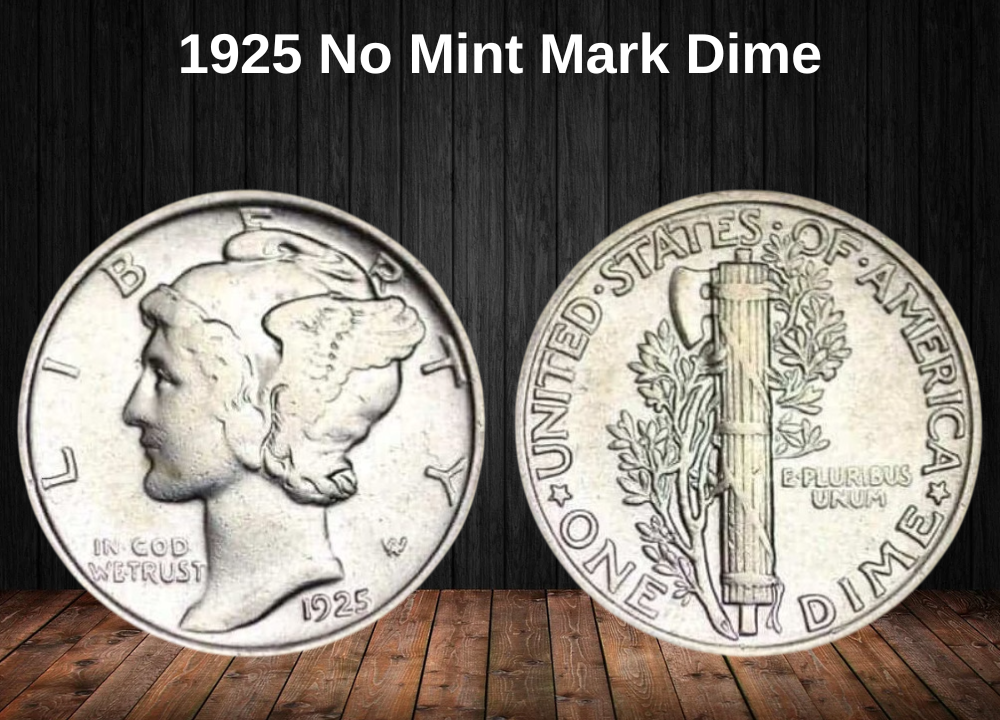
The 1925 (P) Mercury Dime was struck at the Philadelphia Mint, with a mintage of over 25.6 million pieces—the highest of that year. Despite the large production, most 1925 (P) dimes are known for weak to average strikes, making sharply detailed examples harder to find.
- In Good to Fine condition, values range from $4 to $12.
- In About Uncirculated (AU58), the coin is worth $50, or $65 with the Full Bands designation.
- At MS62, values climb to $80 (or $165 with Full Bands).
- At MS65, prices increase to $400, or $1,000 with Full Bands.
- At the elite MS67 grade, these coins are valued around $1,750, while those with Full Bands reach $3,600.
Because mint-state survivors are common, circulated examples remain affordable, but gem-quality Full Bands coins are significantly more valuable.
1925 D Dime Value (Denver)

The Denver Mint produced 5.1 million dimes in 1925, the lowest mintage of the year. These dimes are notorious for being weakly struck and are scarce in all grades, especially in high mint state.
- In Fine condition, the coin is valued at about $35.
- In Extremely Fine, it jumps to around $150.
- In AU58, the value rises to $450.
- At MS62, a 1925 D dime is worth $750 (or $850 with Full Bands).
- In MS65, the value increases to $2,000, or $5,250 with Full Bands.
- At the ultra-rare MS67 Full Bands, this coin reaches an astounding $22,500.
Only a handful of 1925 D dimes with this designation exist, making them some of the most sought-after Mercury dimes in the entire series.
1925 S Dime Value (San Francisco)
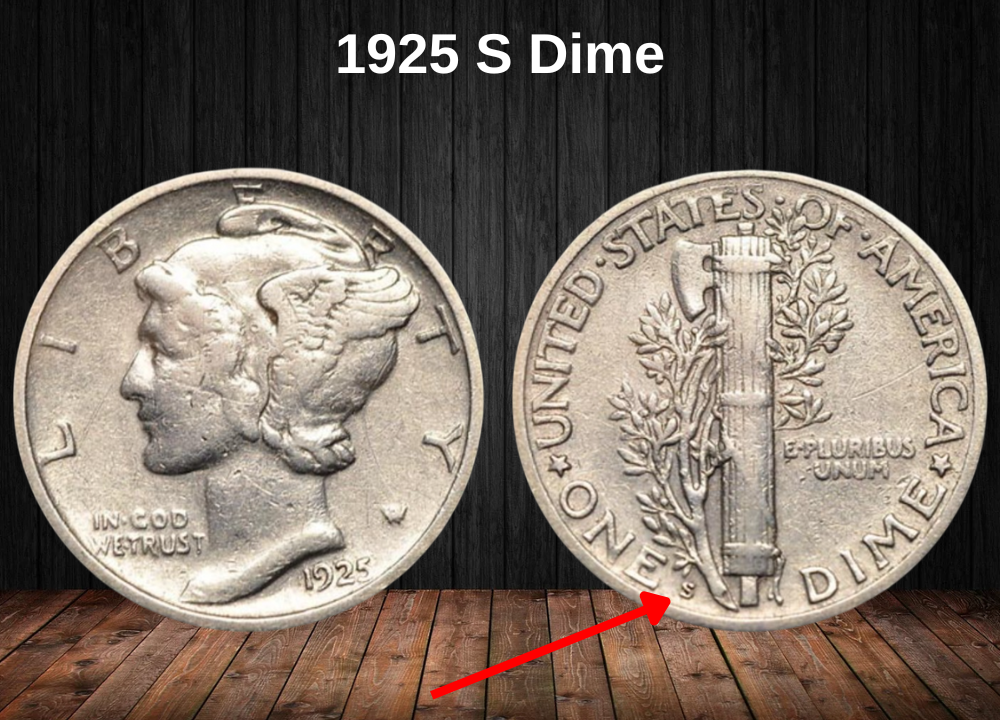
The San Francisco Mint struck 5.85 million dimes in 1925, slightly higher than Denver’s output. Like Denver’s coins, the 1925 S issue is also known for soft strikes, making Full Bands examples extremely rare.
- In Extremely Fine condition, values start around $100.
- In About Uncirculated (AU58), prices range between $150–$360.
- At MS62, the coin is worth around $625.
- In MS64, the value nearly doubles to $1,075.
- At MS65, prices stand at $1,500, or about $4,250 with Full Bands.
- The near-perfect MS67 Full Bands examples are considered treasures of the series, with auction prices soaring up to $67,500.
While many circulated examples exist due to early hoarding, high-grade Full Bands specimens remain exceptionally scarce and valuable.
Rare 1925 Dime Error List
While the 1925 Mercury dimes are generally known for weak strikes rather than minting mistakes, a few interesting error varieties have been documented. These errors add collectible value and uniqueness to an already historic coin.
1925 Dime Broad-Struck Error
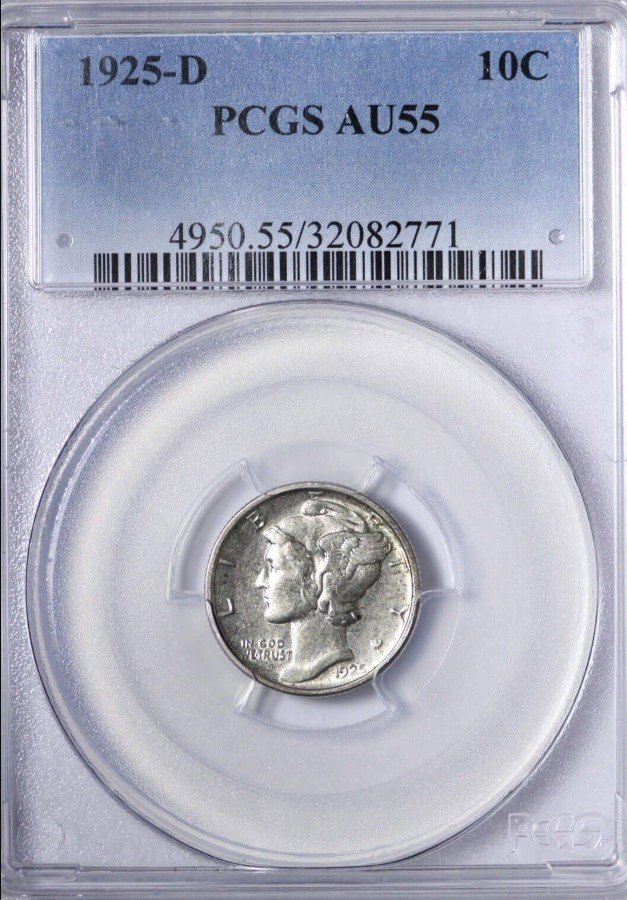
A broad strike error happens when the coin isn’t properly secured within the collar die during striking. Instead of being held tightly in place, the blank expands outward when struck, creating a coin that looks wider than normal with blank, flat edges.
Unlike off-center strikes, broad-struck coins still display their full design elements, although some details may appear stretched.
- One known AU55 1925 dime with this error showed the letters E and R in “LIBERTY” almost fading out.
- Despite the wear, it still sold for over $100 at auction.
Broad-struck coins in higher mint states would be even more valuable due to their rarity and preservation.
1925 Dime Lamination Error
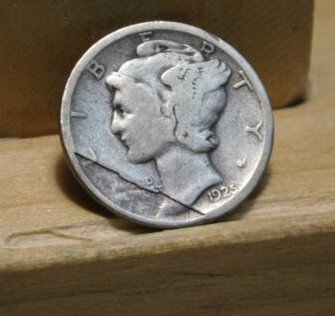
A lamination error occurs when impurities in the metal cause the coin’s surface to crack, peel, or flake away. This flaw may appear immediately after striking or develop gradually over time.
- A notable 1925 (P) dime displayed a large lamination split on the obverse, near the lower left side of the coin.
- Even in a heavily circulated state, it still sold for $29.
- In uncirculated condition, such a coin could command significantly higher prices.
Where to Sell Your Dime Coin?
Now that you know the value of your dime, the next step is deciding where to sell it. There are several trusted options—both online and in person—that can help you get the best price depending on your coin’s rarity and condition.
To see the full list of recommended places, along with their advantages and disadvantages, check our complete guide on where to sell your dime coins.
1925 Dime FAQs
Why are 1925 Mercury dimes often considered weakly struck compared to other years?
The 1925 dimes, especially those from Denver and San Francisco, were struck using dies that lacked sharpness and detail. As a result, even uncirculated examples often appear flat, with less detail on Liberty’s hair and the fasces bands on the reverse. This makes well-struck coins especially desirable.
How does the scarcity of Full Bands examples affect the value of the 1925 dime?
Full Bands dimes show complete separation of the horizontal bands on the fasces, a sign of a strong strike. Because 1925 dimes were generally weakly struck, Full Bands examples are extremely rare. This scarcity makes them significantly more valuable than standard mint-state coins.
Why is the 1925-D dime more valuable than the 1925-P despite its weaker strike?
Although the 1925-P had the largest mintage at over 25 million coins, the Denver Mint struck only 5.1 million. This lower mintage, combined with weak striking and fewer surviving mint-state examples, makes the 1925-D much rarer and more expensive in all grades.
What role did historical events of the 1920s play in the production quality of the 1925 dime?
The 1920s were a period of economic growth, but also of high demand for coinage. This pressure on the mints led to overused dies and less attention to strike quality. The rush to meet circulation needs likely contributed to the weaker strikes seen in 1925.
How do collectors distinguish between natural wear and weak striking on 1925 dimes?
Collectors focus on luster and high-point details. A weak strike will show flatness in Liberty’s hair and the fasces bands but still retain mint luster. Wear, on the other hand, removes luster and smooths the coin’s surface, especially on Liberty’s cheek and ear.
Why do some circulated 1925 dimes still command high prices despite heavy wear?
Even worn examples of the 1925-D and 1925-S are valuable due to their scarcity. While Philadelphia issues are common in circulation, Denver and San Francisco dimes remain rare in all grades, so collectors are willing to pay premiums even for lower-grade coins.
What makes mint errors like broad strikes and laminations on the 1925 dime so collectible?
Because 1925 dimes rarely show major errors, any authentic mistake like a broad strike or lamination becomes especially attractive to collectors. These coins stand out in a series already known for weak strikes, adding uniqueness and rarity to the coin.
How do population reports influence the market value of gem-grade 1925 dimes?
Population reports from grading services like PCGS and NGC reveal how many coins exist at each grade. When only a handful of MS67 Full Bands dimes are known, their market value skyrockets. Collectors often compete fiercely for these limited top-grade survivors.
Why are MS67 Full Bands examples of the 1925-D and 1925-S considered trophy coins in numismatics?
These coins combine three rare factors: low mintages, weak strikes, and the near impossibility of finding Full Bands. Only a few exist, making them trophy coins that symbolize the pinnacle of Mercury dime collecting. Prices can reach tens of thousands of dollars.
How does the 1925 dime compare in rarity and demand with earlier dates like 1916 or later ones like 1945?
The 1916-D is famous for its extreme rarity, while the 1945 issues are more common and affordable. The 1925 dimes sit in between—more available than 1916-D but scarcer and more valuable than the later wartime issues, particularly in higher grades.

